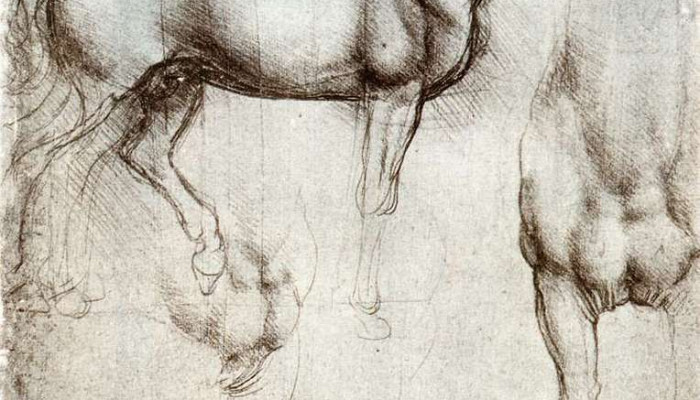Dossier: Researching Green Criminology in Europe (2)

Green criminology – the study of harms and crimes against the natural environment and nonhuman animals – has developed significantly in the past few decades and is now a respected field of scholarship worldwide. So, also in the Nordic countries. Here, I will sketch out some of the research carried out in Scandinavia, with a particular focus on Norway, since green criminology there so far has been given more priority than in other Nordic countries, whether in the form of teaching or research. For instance: for over a decade, a green criminology course (KRIM 2960/4960) has been offered to international students who have come to Oslo to take the course as part of their BA or MA degrees. These are students with diverse backgrounds who choose the course because of their concern for the environment and nonhuman species and to attend lectures held by various internationally recognized scholars.
The first green criminology project in Scandinavia was funded by the Nordic Research Council for Criminology and brought together academics from Norway, Sweden, Finland and Greenland. It resulted in a book (Ellefsen et al., 2012), which, much in the spirit of green criminology, included contributions from various fields. The book illustrated that, in order to address the harms and crimes directed at the natural environment and nonhuman animals, a cross-disciplinary approach is required, and that criminology is not the only field in which scholars work based on an increasing concern for the current climate and nature crisis.
Green criminology, like other subfields of criminology, pays particular attention to laws, regulations and conventions that aim to prevent unwanted, environmentally harmful behaviour and the effects and enforcement of such legislation. This, for example, has recently been the focus of legal scholar Ragnheiður Bragadóttir, who has investigated the enforcement of legislation related to the natural environment in Iceland, and who finds, similarly to the finding in many other countries, that environmental crimes are under-enforced (e.g. White, 2018). While legislation may be in place, the enforcement of such legislation generally seems to lack priority, and is enforced by means of administrative sanctions such as fines which, consequently, have no general preventative effects and remain symbolic (Bragadóttir 2023),
While international research on the harms and crimes of the food sector has progressed, particularly regarding animal husbandry (Fitzgerald, 2010), little attention has been paid to this particular harm in Scandinavia so far (but see e.g. Gålmark, 2008). This is despite the meat industry‘s tremendous environmental, abusive and harmful effects, whether concerning the harm done to each animal in a factory farm or industrialised slaughterhouse or the destruction of the rainforest in Brazil.
Many people engage in protest against the treatment of animals in industrial complexes, whether they are subject to exploitation for their flesh or for the pharmaceutical industry, and research has focussed on the systems of oppression of those who engage in legal and illegal means to protect animals from harms, e.g. by the research industry (Ellefsen, 2016).
Wildlife crimes and harms have received an increasing amount of attention in Scandinavia, particularly in regard to endangered large carnivores, such as the wolf, and the social conflicts arising due to their reappearance in the mid-eighties, when they became protected under national and international law such as the Bern Convention (1979) and the EU habitat directive (n.d.) (e.g. von Essen and Allan, 2017; Hagstedt and Korsell, 2012; Sollund and Goyes, 2021). The study of social conflicts caused by how the wolf symbolically is cast as the enemy and the cause for urban-rural conflict is an urgent field of study alongside the rewilding of endangered large carnivores across Europe and the attempts to restore nature and rewild endangered species during the nature crisis (CRIMEANTHROP, 2019).
Wildlife crimes and harms also encompass the legal and illegal trade in endangered species. Norway is a major recipient of wildlife traded through the CITES (n.d.) system (Andersson et al., 2021), and illegally trafficked wildlife (and wildlife products) arrive in Norway regularly, whether as trophies from Africa, ivory figurines, medicinal products or live parrots and reptiles (Sollund, 2019). Like the legal and illegal killing of large carnivores (Lie, 2023), the legal and illegal wildlife trade contributes to species extinction, extensive animal harm and the destruction of ecosystems.
The green criminology research that has been carried out in Scandinavia is multi-disciplinary and critical. It also pictures and reflects similar problems and research in other parts of the world but which are also locally specific, suggesting that while the world as one is living in a crisis of global warming, species loss and pollution, criminologists in different parts of the world must also address the specific problems and conditions of each region.
References:
Andersson, A. A., Tilley, H. B., Lau, W., Dudgeon, D., Bonebrake, T. C., & Dingle, C. (2021). CITES and beyond: Illuminating 20 years of global, legal wildlife trade. Global Ecology and Conservation, 26, e01455.
Bragadóttir, R. (2023). Protecting the Environment with Criminal Law – The Case of Iceland. Nordisk Tidsskrift for Kriminalvidenskab – nr. 1/2023, p. 5-25
Bern convention (1979). Convention on the conservation of European wildlife and natural habitats (Bern Convention) - Convention on the Conservation of European Wildlife and Natural Habitats (coe.int)
CRIMEANTHROP (2019). CRIMEANTHROP - Department of Criminology and Sociology of Law (IKRS) (uio.no)
CITES (n.d.) Front | CITES
Ellefsen, R., Sollund, R. and Larsen, G. (eds) (2012). Eco-global Crimes. Contemporary problems and future challenges. Farnham: Ashgate.
Fitzgerald, A. J. (2010). A social history of the slaughterhouse: From inception to contemporary implications. Human ecology review, 58-69.KRIM 2969/4960 (2023) KRIM4960 – Green Criminology – University of Oslo (uio.no)
Gålmark, L. (2008). Aristotle revisited: Anthro-androcentrism and meat normativity. Global harms, ecological crime and speciesism, 87-109.
The Habitats Directive (europa.eu)
Hagstedt, J, and Korsell, L. (2012). Unlawful hunting of large carnivores in Sweden. In Ellefsen et al (eds). Eco-global Crimes. Contemporary problems and future challenges. P. 209-232
Lie, M. (2023). Legal and illegal wolf and bear hunts in Norway: A species unjust divide. In, Sollund, R., and Lie S.B. (eds). Criminal Justice, wildlife conservation and animal rights in the Anthropocene. Bristol University Press. (in print).
Sollund, R. (2019). The crimes of wildlife trafficking. Issues of justice, legality and morality. London: Routledge.
Sollund, R., & Goyes, D. R. (2021). State-organized crime and the killing of wolves in Norway. Trends in Organized Crime, 24(4), 467-484.
von Essen, E., & Allen, M. (2017). Interspecies violence and crimes of dissent: Communication ethics and legitimacy in message crimes involving wildlife. Critical Criminology, 25, 261-274.
White, R. (2018). Transnational environmental crime: Toward an eco-global criminology. Willan.
